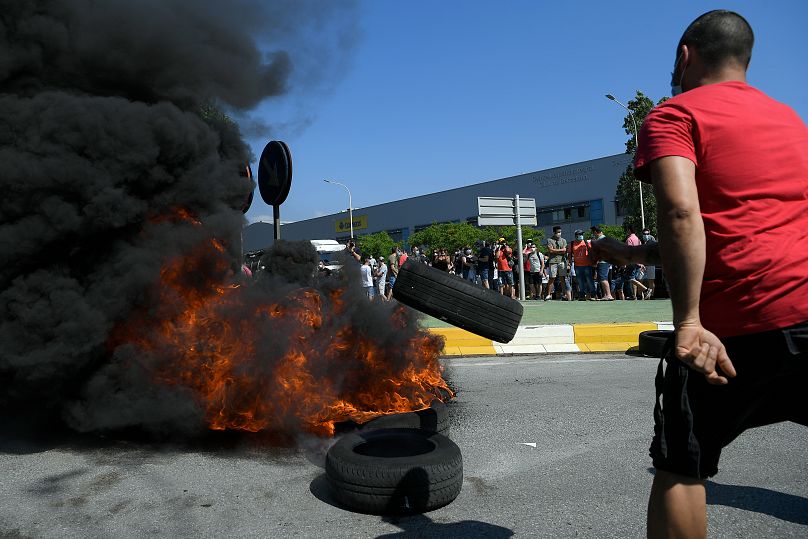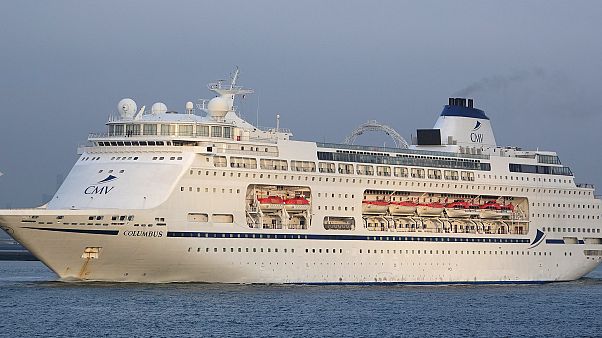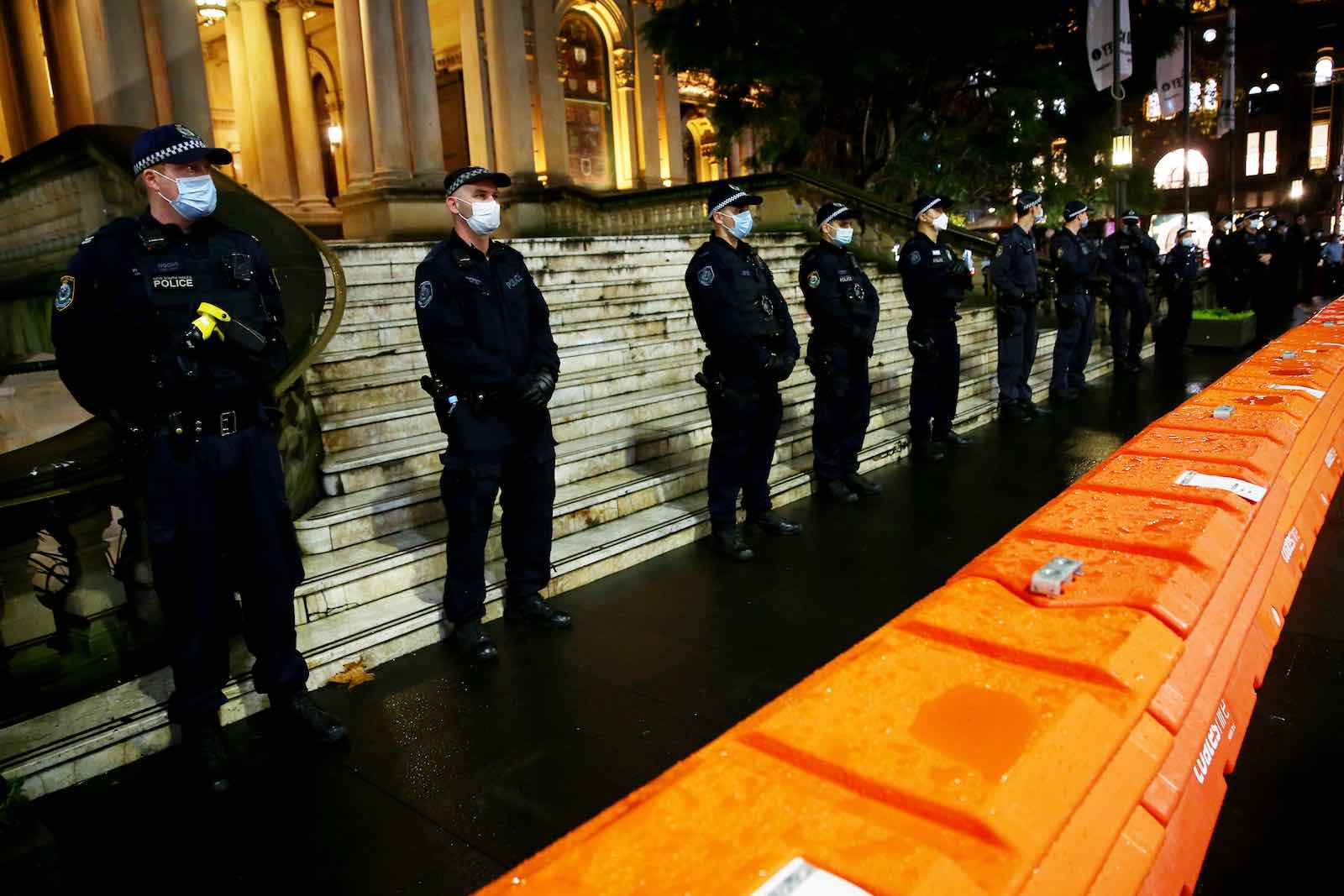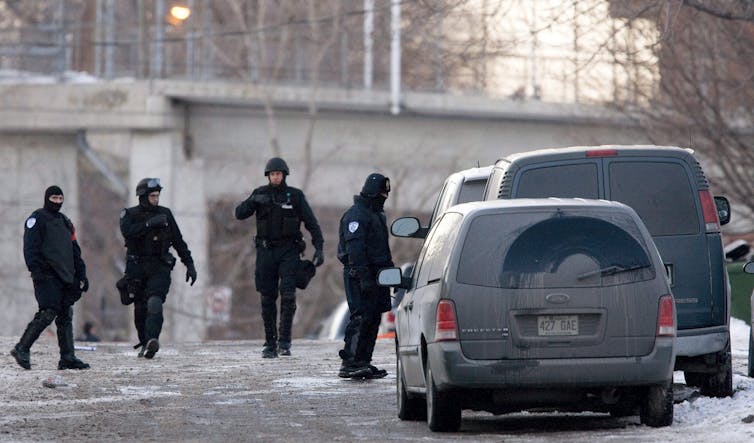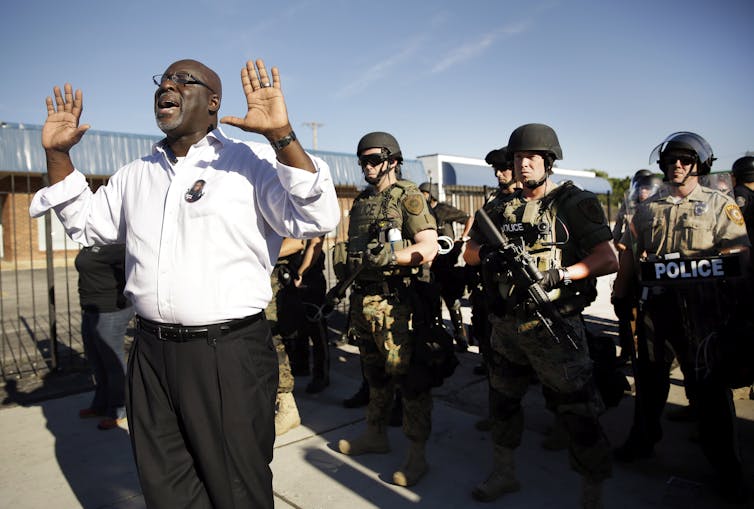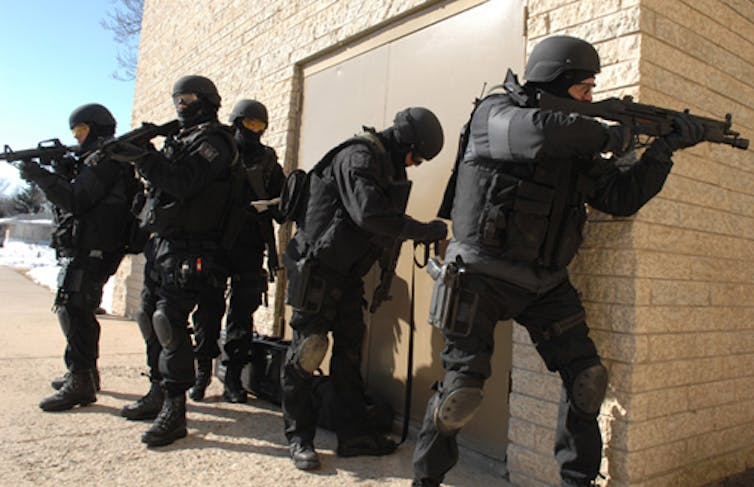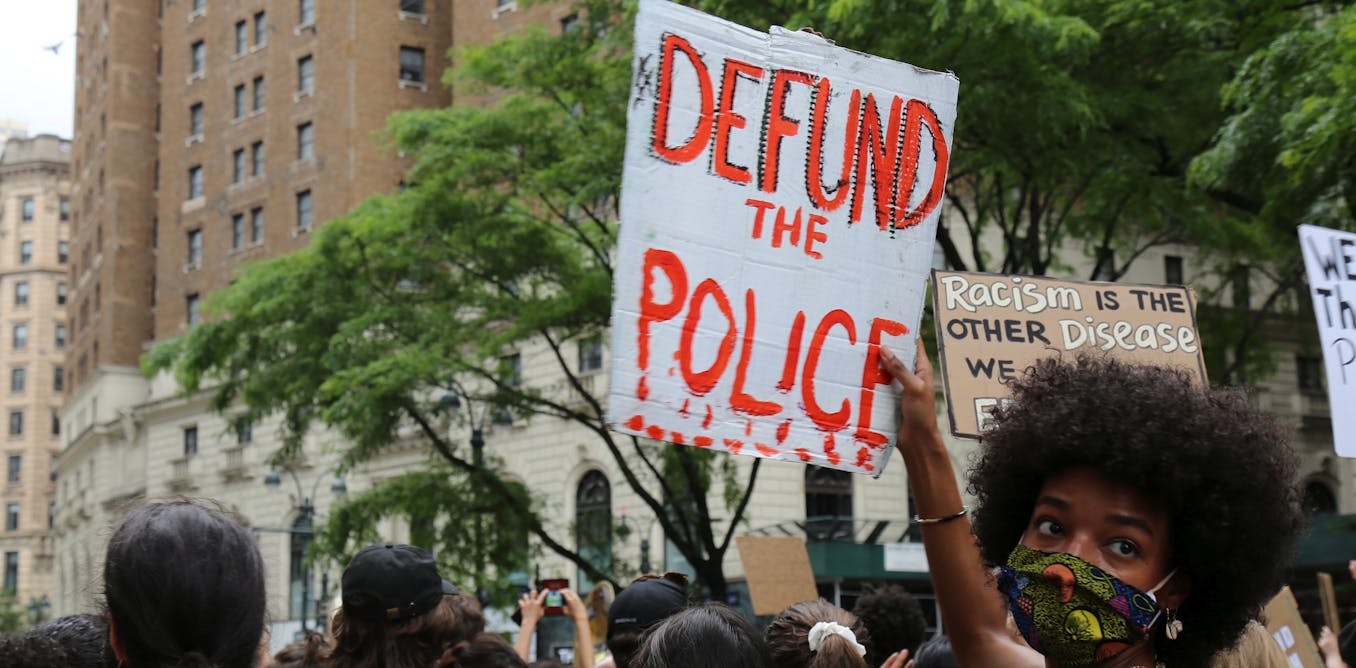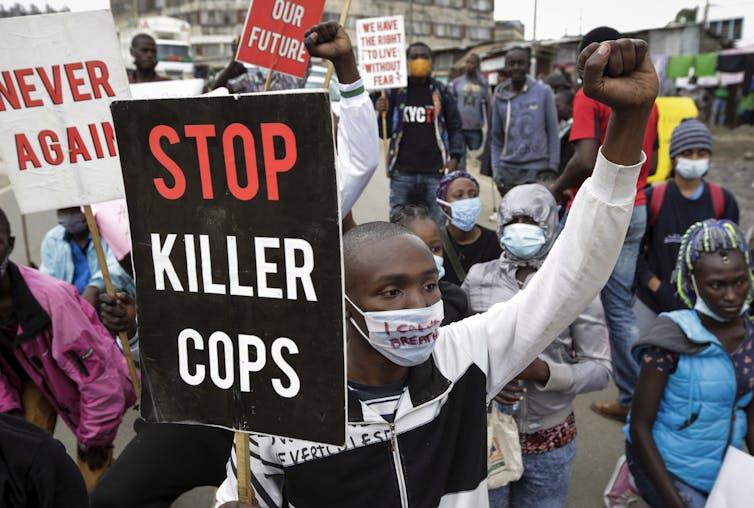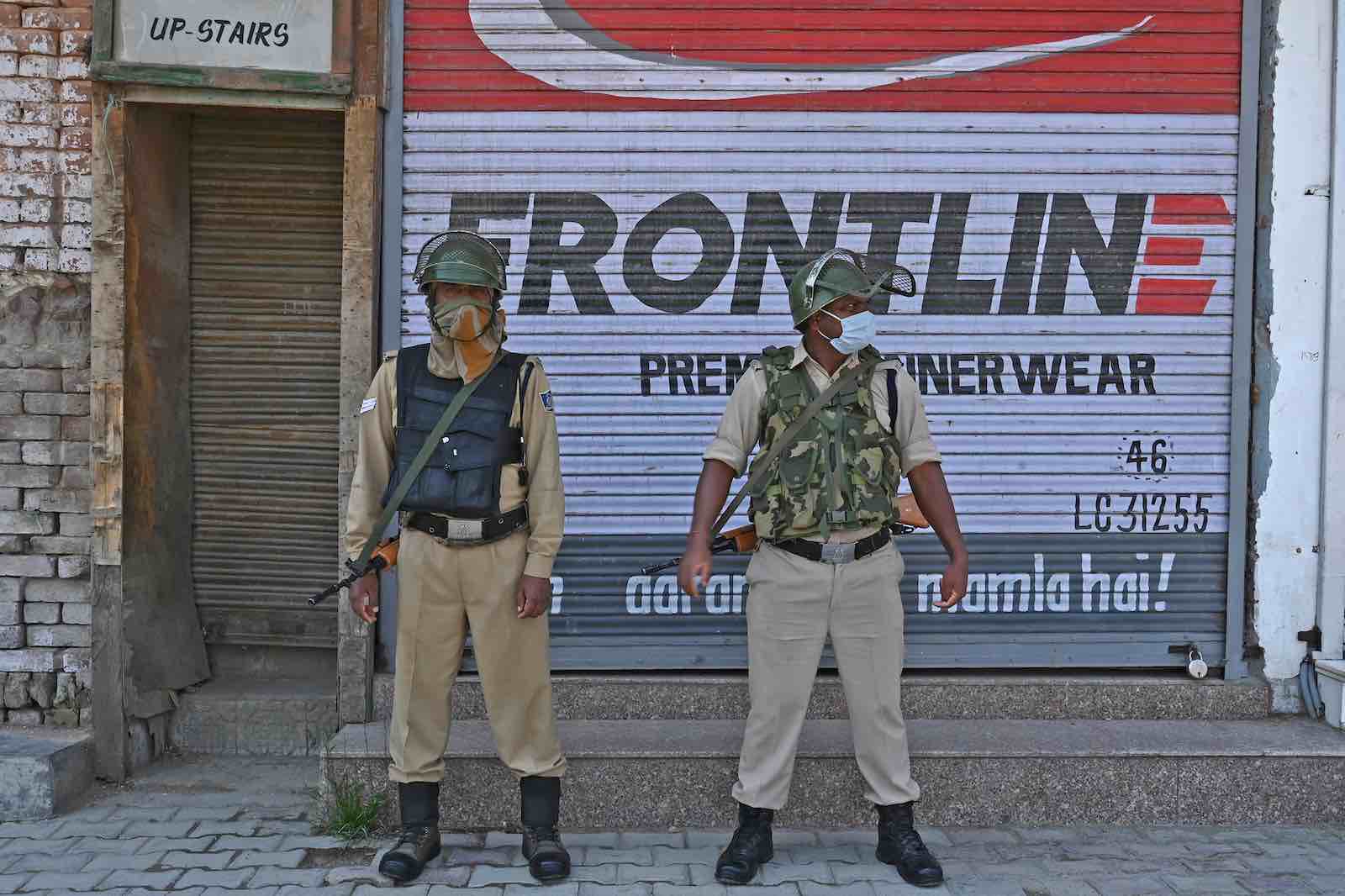By Alice Tidey with AP • last updated: 20/06/2020 - 14:33
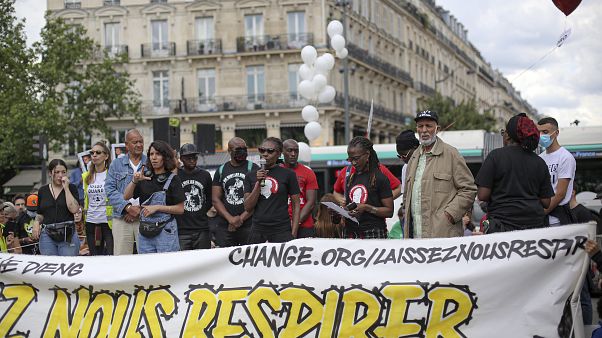
Ramata Dieng, the mother of Lamine Dieng, a 25-year-old Franco-Senegalese who died in a police van after being arrested in 2007, during a protest in Paris. June 20, 2020. - Copyright AP Photo/Rafael Yaghobzadeh
Anti-racism protests are to be staged across the UK and France on Saturday with authorities urging people to respect social distancing rules.
Four separate protests have been allowed to take place in Paris on Saturday, two of which to denounce racism and police violence.
One of them is to pay tribute to Lamine Dieng, a 25-year-old Franco-Senegalese who died in a police van after being arrested in 2007.
Protesters marched through Paris with signs reading "Laissez nous respirer" ("Let us breathe") in reference to George Floyd, an African American who died on May 25 in Minneapolis after a police officer kneed on his neck for nearly nine minutes.
Last week, it emerged that the French government agreed to pay €145,000 to Dieng's relatives, after 13 years of legal wrangling.
Three other planned protests have however been banned, including an anti-racism demonstration near the US Embassy by the Black African Defense League, and another protest linked to recent violence involving Chechens in the French city of Dijon.
George Floyd death: Police racially profile in Europe too, experts tell Euronews
The Prefecture de Police said that the risk of violence from these there protests was too high.
France's highest court, the Conseil d'Etat, sided with human rights groups and unions last week and ruled that authorities could not ban demonstrations.
The government, which started to lift lockdown restrictions imposed to curb the spread of the COVID-19 pandemic on May 11, is still prohibiting public gatherings of more than 10 people.
Several anti-racism protests are also scheduled across the UK.
On Saturday morning, some 1,500 people gathered in Glasgow, Scotland, for a socially-distant protest in support of the Black Lives Matter movement.
Another protest will take place in London in the afternoon. It comes after anti-racism campaigners called off planned demonstrations last weekend to avoid clashing with far-right activists who were staging a counter-protest.
The Metropolitan Police is calling on people to "comply with regulations of not gatherings in groups larger than six people" due to the health crisis.
"We value democracy and the right for people to have a voice, but would ask people to do so in another way, and not come to London to demonstrate," it added on Twitter.
More than 100 arrested after far-right activists clash with police in London
It also warned that "officers will be making arrests if there is violence".
"Whilst the majority of people who have attended demonstrations over the past few weeks were not violent, there have been a small minority intent on violence against our officers and others, and this is completely unacceptable and we are working hard to bring offenders to justice," it said.
London police have carried out almost 230 arrests during protests over the past month with more than half relating to the June 13 protest when far-right activists clashed with police.
So far, twenty-four people have been charged for violent disorder, assault, criminal damage, possession of Class A or Class B drugs and offences under the Health Protection Regulations among other charges.
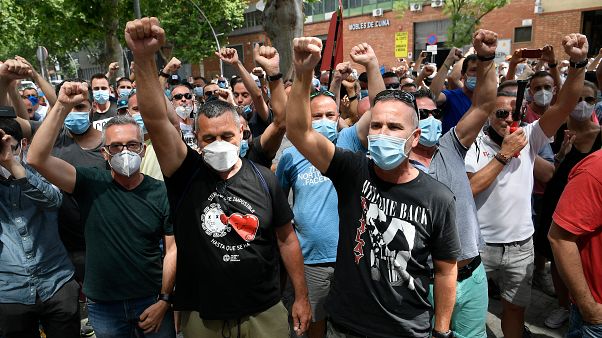
 BP plans to axe 10,000 jobs worldwidePAUL ELLIS/AFP or licensors
BP plans to axe 10,000 jobs worldwidePAUL ELLIS/AFP or licensors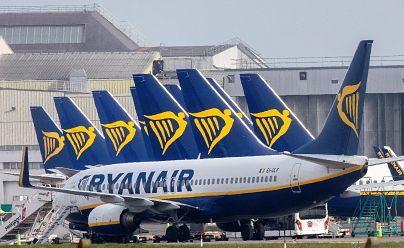 Budget airlines have also been impacted by COVID-19.PAUL FAITH/AFP
Budget airlines have also been impacted by COVID-19.PAUL FAITH/AFP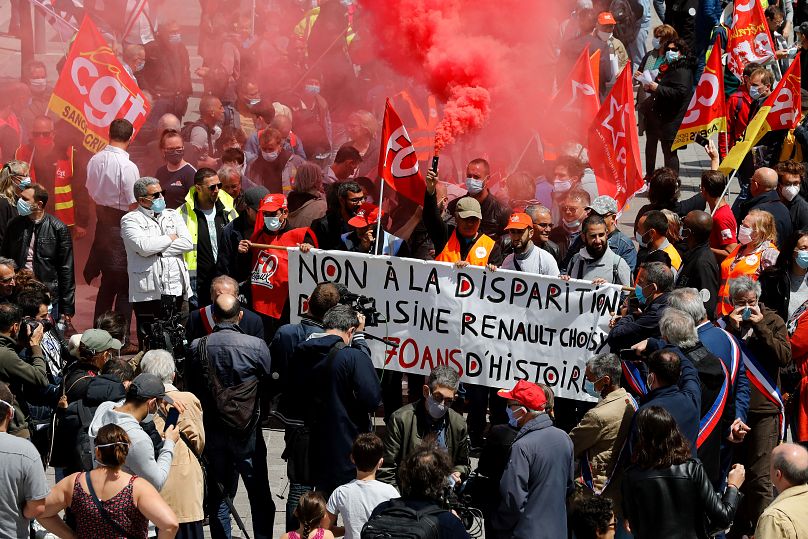
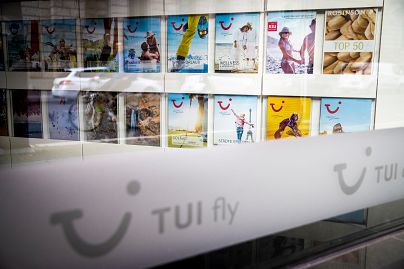
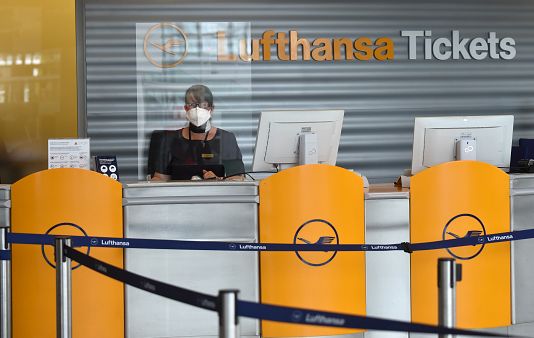 Half of the Lufthansa jobs are expected to go in Germany.CHRISTOF STACHE/AFP or licensors
Half of the Lufthansa jobs are expected to go in Germany.CHRISTOF STACHE/AFP or licensors